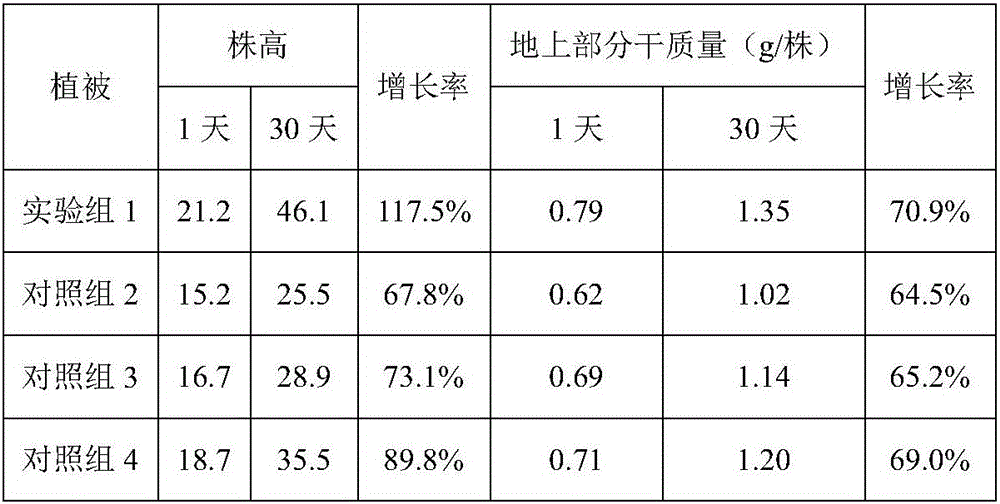Method for planting sea vegetables by using sea shrimp farming wastewater in tidal-flat region
A technology for seawater vegetables and aquaculture wastewater, applied in the fields of botanical equipment and methods, plant cultivation, horticulture, etc., can solve problems such as waste of pond ridges, pollution of aquaculture water bodies, etc., and achieve the effects of feasible operation, low cost, and improved utilization rate of wastewater
- Summary
- Abstract
- Description
- Claims
- Application Information
AI Technical Summary
Problems solved by technology
Method used
Image
Examples
Embodiment 1
[0021] A method for planting seawater vegetables in tidal flat sea prawn culture wastewater, comprising the waste water produced by conventional sea prawn culture on the tidal flat, is characterized in that it includes the following steps:
[0022] (1) Select plots next to the shrimp ponds where sea prawns are cultured in seawater, plow the soil deeply, remove weeds, make furrows on flat ground, with a furrow width of 3m, and make furrows between furrows with a width of 25cm and a depth of 25cm, and a furrow around the field with a width of 45cm. Groove depth 25cm;
[0023] (2) In April, the border was flooded with sea shrimp culture wastewater for 3 consecutive days, and the wastewater was discharged after staying for 2 hours each time; on the 4th day, 1.8 kg of seeds were used per mu, spread evenly, and covered with 1.5 kg of seeds on the surface of the border after sowing. cm of fine sand; after the seedlings grow, use the cultured sea prawn wastewater to irrigate every day...
Embodiment 2
[0029] A method for planting seawater vegetables in tidal flat sea prawn culture wastewater, comprising the waste water produced by conventional sea prawn culture on the tidal flat, is characterized in that it includes the following steps:
[0030] (1) Select plots next to the shrimp ponds where sea prawns are cultured in seawater, plow the soil deeply, remove weeds, make furrows on flat ground, with a furrow width of 3m, and make furrows between furrows with a width of 25cm and a depth of 25cm, and a furrow around the field with a width of 45cm. Groove depth 25cm;
[0031] (2) In April, the border was flooded with sea shrimp culture wastewater for 3 consecutive days, and the wastewater was discharged after staying for 2 hours each time; on the 4th day, 1.8 kg of seeds were used per mu, spread evenly, and covered with 1.5 kg of seeds on the surface of the border after sowing. cm of fine sand; after the seedlings grow, use the cultured sea prawn wastewater to irrigate every day...
Embodiment 3
[0043] This embodiment compares the growth of Salicornia under different planting conditions. After 30 days of cultivation of Salicornia, the plant height and biomass changed, as shown in Table 1.
PUM
 Login to View More
Login to View More Abstract
Description
Claims
Application Information
 Login to View More
Login to View More - R&D
- Intellectual Property
- Life Sciences
- Materials
- Tech Scout
- Unparalleled Data Quality
- Higher Quality Content
- 60% Fewer Hallucinations
Browse by: Latest US Patents, China's latest patents, Technical Efficacy Thesaurus, Application Domain, Technology Topic, Popular Technical Reports.
© 2025 PatSnap. All rights reserved.Legal|Privacy policy|Modern Slavery Act Transparency Statement|Sitemap|About US| Contact US: help@patsnap.com


